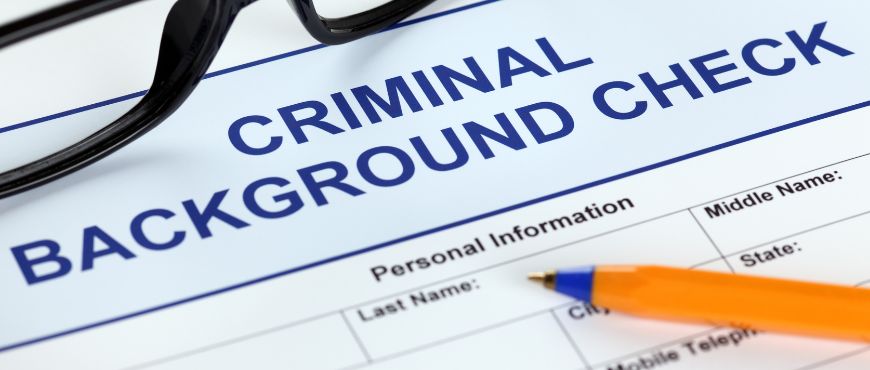
What Happens in an HMRC IR35 Investigation?
Whether you’re a company engaging contractors or an individual operating through a limited company, an HMRC IR35 investigation can be a stressful experience.
These investigations scrutinise working arrangements to ensure they comply with the IR35 regulations, which distinguish between genuine self-employment and disguised employment.
In this article, I’ll provide a comprehensive overview of the IR35 investigation process, relevant to both ends of the contracting spectrum. I’ll explore HMRC’s approach, common challenges, and effective strategies for managing an enquiry.

- What’s the IR35 Investigation Process?
- (1) Receiving the Initial Letter from HMRC
- (2) Gathering Documents for Submission
- (3) Fact-Finding Stage
- (4) Further Correspondence or Meetings
- (5) Receiving a Determination Letter
- (6) Options After the Determination
- Face-to-Face Meetings during IR35 Investigations
- IR35 Penalties
- What to do if You are under IR35 Investigation
- What Are the Consequences If You’re Caught by IR35?
What’s the IR35 Investigation Process?
(1) Receiving the Initial Letter from HMRC
You’ll receive a formal letter from HMRC, often titled ‘Check of Employer Records’. This letter requests specific documents related to a particular tax year, signalling the start of the investigation, and often focuses on your largest or longest-running contracts.
(2) Gathering Documents for Submission
After you get the letter, you’ll need to collect a range of documents. HMRC will usually ask for your contracts, a list of payments you’ve received, and any invoices you’ve sent. You should also provide any additional documents like job descriptions and handbooks from your clients. Make sure to have everything well-organised before sending it off.
(3) Fact-Finding Stage
HMRC will scrutinise your documents, looking for employment indicators such as mutuality of obligation, control, and right of substitution. They may issue detailed questionnaires to you and your end client, comparing responses to identify discrepancies.
(4) Further Correspondence or Meetings
Expect follow-up queries from HMRC. While they may suggest a face-to-face meeting, we typically advise keeping all communication in writing to maintain a clear audit trail.
(5) Receiving a Determination Letter
HMRC will issue a decision letter. If they deem you ‘inside IR35’, they’ll provide a breakdown of additional tax and National Insurance due, often with interest added.
(6) Options After the Determination
You have 30 days to appeal HMRC’s decision. Options include requesting an internal review, using HMRC’s Alternative Dispute Resolution service, or appealing to the First-tier Tax Tribunal.
Face-to-Face Meetings during IR35 Investigations
Although it is within your rights to refuse a face-to-face meeting, accepting HMRC’s invitation may lead to your enquiry being concluded more quickly.
The main purpose of these meetings is for HMRC to explore the details of the relationship between yourself and the client. HMRC will spend time examining written contracts, including the terms and conditions, to form a picture of the way you’ve been working.
If you’re maintaining that you are indeed a contractor, you’ll need to demonstrate that you are treated differently from your client’s employees (if they have any). This means you have the autonomy to manage your own assignments and that your working practices clearly indicate you are self-employed.
Be ready to provide examples of how you’ve operated as a genuine business, such as instances where you’ve negotiated contract terms or declined work.
If you decide to attend, we recommend:
- Preparing thoroughly, reviewing all relevant documents and rehearsing potential questions
- Bringing a professional advisor who understands IR35 legislation
- Answering questions honestly but concisely, avoiding speculation
- Requesting time to provide additional information if you’re unsure about a response
Remember, while these meetings can be beneficial, anything said can be used in HMRC’s determination.
IR35 Penalties
Misclassifying a contractor as an employee under IR35 can result in significant financial repercussions for both businesses and contractors. Here, we’ll break down the potential penalties and how to potentially mitigate them.
- You’ll be responsible for paying any unpaid income tax for the period investigated by HMRC.
- Both the employer’s and employee’s portions of unpaid NICs will need to be settled.
- Interest accumulates on unpaid amounts from their original due dates (currently at 6.75%).
Penalty Calculations:
The severity of the penalty depends on HMRC’s assessment of your intent:
- Careless: Up to 30% of the unpaid tax liability.
- Deliberate but not concealed: Up to 70% of the unpaid tax liability.
- Deliberate and concealed: Up to 100% of the unpaid tax liability.
Several factors can mitigate these penalties. Full cooperation with HMRC’s investigation, voluntary disclosure of errors, and providing clear explanations of your situation may all lead to reduced penalties.
How Long Does it Take?
HMRC’s investigation time limits vary depending on the nature of the case. For standard cases, they can investigate up to 4 years back. This extends to 6 years for careless behaviour and up to 20 years for deliberate non-compliance.
What to do if You are under IR35 Investigation
If you find yourself under an IR35 investigation, it’s crucial to act promptly and strategically. As tax professionals who’ve guided numerous clients through this process, we recommend the following steps:
- Engage a qualified accountant or tax professional with specific IR35 expertise immediately. They can provide invaluable insights, help you understand HMRC’s approach, and develop a robust defence strategy.
- Collect and organise all relevant documents, including contracts, invoices, and evidence of your working practices. Ensure you have copies of everything and pay particular attention to documents that demonstrate your independence from clients.
- Cooperate with the investigation: Respond promptly and thoroughly to all HMRC requests. Timely cooperation can expedite the process and potentially lead to a more favourable outcome. However, always consult your advisor before providing information to ensure your responses are accurate and strategically sound.
- Keep detailed records: If you haven’t already, start maintaining meticulous records of your working arrangements. This includes contracts, correspondence with clients, and evidence of business-like practices such as marketing efforts or professional indemnity insurance.
- Consider appeal options carefully: If HMRC determines you’re inside IR35, you have the right to appeal. This decision shouldn’t be taken lightly – consult your tax professional to assess the strength of your case and the potential costs involved.
What Are the Consequences If You’re Caught by IR35?
Initially classified as “inside IR35”: If your engagement is determined to be inside IR35 from the outset, you’ll face higher Income Tax and National Insurance contributions. For public sector roles and engagements with medium or large private businesses, these additional taxes will be deducted directly from your fees. When working with small private clients, you may be responsible for calculating and paying these taxes yourself at the end of the tax year.
Reclassified during an HMRC compliance check: If HMRC reclassifies your work for a medium or large client as “inside IR35” during a compliance check, the consequences can be more complex. Assuming all parties have met their obligations under the off-payroll working rules, the liability for unpaid taxes, interest, and potential penalties typically falls on the fee-payer (the organisation paying you). This means they, rather than you, would be responsible for settling the additional tax bill.
However, it’s crucial to note that this shift in liability doesn’t mean you’re entirely off the hook. Such a reclassification could potentially:
- Damage your relationship with the client
- Lead to contract termination or non-renewal
- Impact your reputation in your industry
- Result in increased scrutiny of your other contracts
Furthermore, if HMRC determines that you haven’t taken reasonable care in assessing your IR35 status or providing information, you could still face penalties.
Given these potential consequences, we strongly advise seeking professional guidance to ensure your IR35 status is correctly determined from the outset, and to help you navigate any HMRC enquiries effectively.
Related Articles








